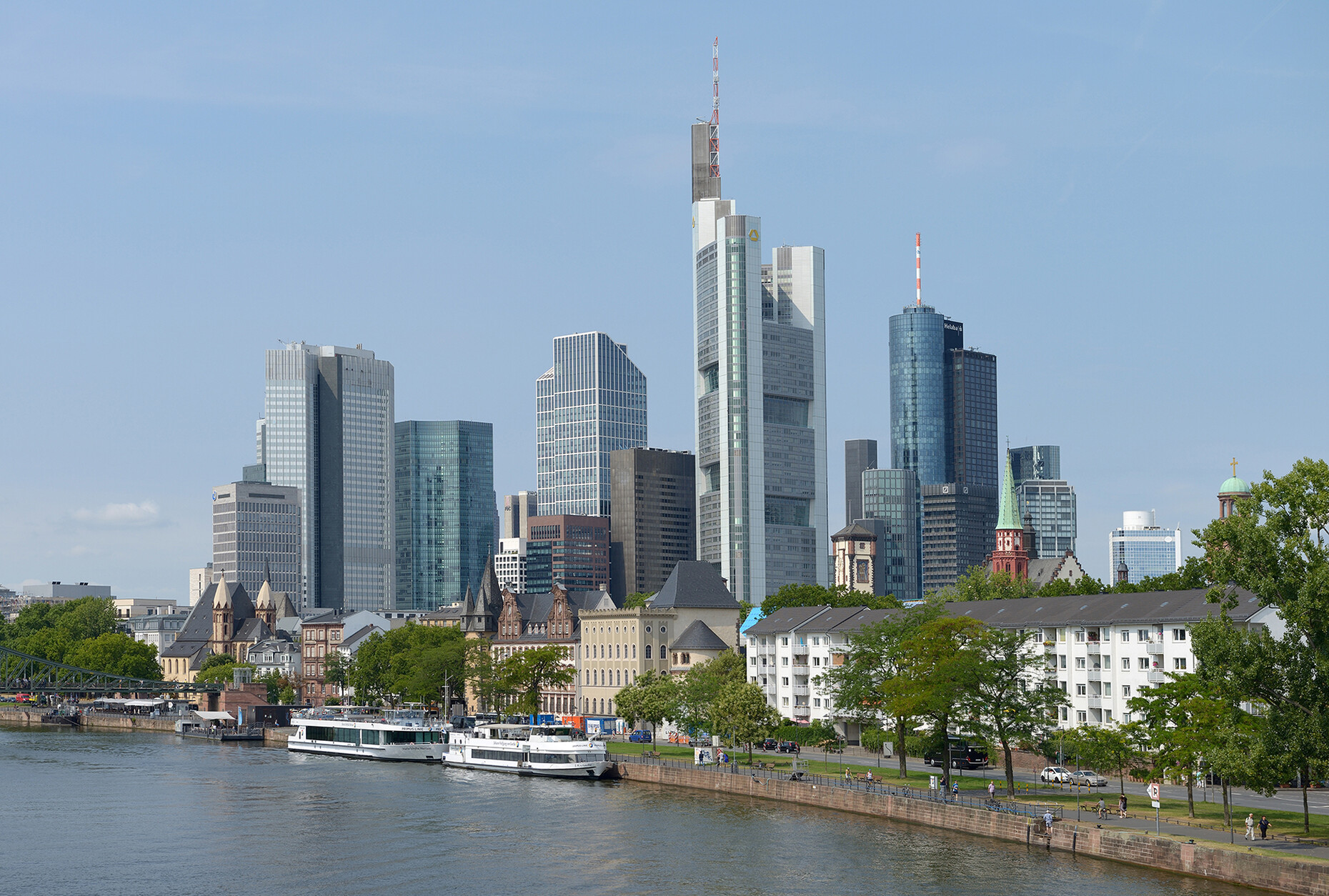MOBILITY
A changing city
Anna Moldenhauer: Mr. Becker, what’s the first thing that comes to mind when you hear the term "traffic-reduced downtown"?
Torsten Becker: Streets and squares where many people can get together and enjoy urban life undisturbed by noise and emissions. Essentially, something that constitutes urban culture.
And what should an ideal urban setting look like in your opinion?
Torsten Becker: There are a number of essential points. It would be good to keep cars out of the city center by intercepting them on the outskirts and offering increased parking facilities in garages. Public space needs an attractive, cleaner design with broader pavements. We also need more greenery in the city that can also provide shade on hot summer days. Inner-city areas need to be better adapted to climate change.
What do you specifically have in mind for Frankfurt/Main?
Torsten Becker: The city of Frankfurt is part of the "Post Corona inner-city" program initiated by the German Federal Ministry of the Interior for a resilient urban development. Part of the debate is redesigning public space. Currently we are focusing more on the principles. That includes using the ground floor of specific buildings downtown. There needs to be a greater willingness to make these spaces available for a mixed use of retail and cafés, offices, social institutions and so on. What we would like to see is architecture being tailored more to the needs of pedestrians rather than putting the focus on car drivers.
When the talk is about car-free or traffic-reduced city centers, car drivers often contend that their concerns ignored and that having less traffic downtown will lead to more and chaotic rerouted traffic elsewhere. The arguments can get very heated at times. How do you respond to these dissenting opinions?
Torsten Becker: Essentially, you also have to understand the discussion on a psychological level. For many car drivers a traffic-reduced inner city mainly sounds like they will have to forgo their accustomed freedoms. That is why it is important to explain the positive factors better and to show that this change means quality of life for everyone. That is also an aspect I feel was not given enough attention in the discussion about closing the North side of the Main riverbank in Frankfurt/Main. That aside it is reassuring to see that basically every city that has successfully addressed this topic in recent years, be it Zurich, Copenhagen or Barcelona, has had to deal with similar hurdles and that ultimately the population profited from the redesign of the urban space.
Are you saying the success of the concept hinges on how well it is communicated?
Torsten Becker: Yes, and on honest communications. It is not possible to promise a traffic policy that does not change anything for everyone. You have to show quite clearly that you need more space for pedestrians in order to create greater quality of life in public spaces. Conversely, that means reducing the amount of space made over to cars.
Aside from banning cars from using the North riverbank, the measures in Frankfurt/Main include a cycle-friendly Grüneburgweg and Kettenhofweg as well as a new design for Schweizer Platz. Why do you feel this patchwork approach is worthwhile?
Torsten Becker: You need both, the long-term overall plan but also fast changes made in a few places. As it takes many years to draw up an urban transportation plan it is worth producing some relief in parts such as the resolution prioritizing cycles for certain sections of the city. Local people have to see that something changes for the better after the lengthy discussions and that success can be achieved quickly.
So, people are encouraged to adapt more quickly?
Torsten Becker: Yes, that too. If you promise measures with a long timeframe but without acting, then locals are less likely to support them. However, by implementing ad-hoc measures such as the above you can show that the concept works and can proceed gradually with overall transportation planning.
Do you feel anything is still missing from the current discussion?
Torsten Becker: I would like to see people rethink the concept of inner cities. You don’t necessarily need a great concentration of retail stores there. Essentially, it is only since the 1960s that we have had the model of an inner city as a shopping center in Europe combined with easy access for cars; a concept we adopted from the United States. For hundreds of years before that city centers in Europe were characterized by smaller units. They were more vibrant and diversified. The idea is to ensure inner cities are no longer exclusively places for shops but also for culture, education and places to live.
You are currently involved in the initiative "Making Frankfurt". What is its aim?
Torsten Becker: We are committed to working for a cycle- and pedestrian-friendly downtown, for greater quality of life. For example, one thing that was forgotten during the discussions about the pedestrianized Mainkai riverbank was that it and the Römer were once very vibrant spaces. We want to demonstrate that it is possible to alter the habit of defining a city via its accessibility for cars and create something positive. There are currently a host of sustainable approaches in planning that can help us adapt how we see and use space downtown so that people feel like spending more quality time there be it with regard to Mainzer Landstrasse, Schweizer Strasse or Berger Strasse. There are many situations where it simple doesn’t make any sense for cars to negotiate narrow roads while cyclists and pedestrians alike are unable to move around in a relaxed manner. The era of the car-friendly city is over.









